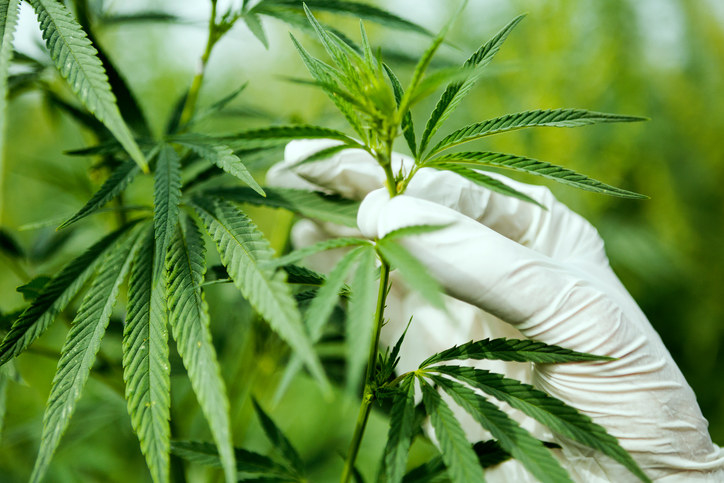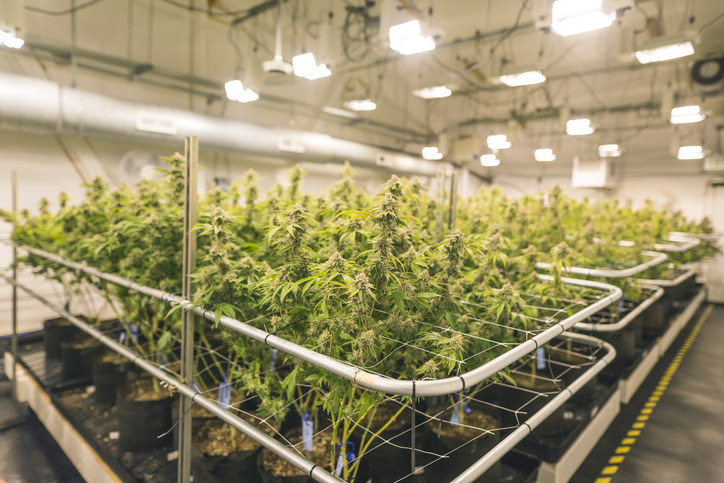A new study from the University of New South Wales (UNSW) published in The Lancet has looked at the use of cannabis for pain and found that cannabis does not appear to help pain management.
Australian research has generally failed to find evidence that cannabis can help to treat pain, yet these results contradict what we're seeing in international studies.
So, what's going on here? Why is this picture so complicated?
Deb Lynch has been suffering chronic pain for over two decades. After slipping on a wet floor, she suffered a slipped disc that choked her spinal chord and began losing the use of her left leg.
The 58 year old has also been diagnosed with CREST syndrome, a disorder that results in severe pain of her peripheries and causes calcium lumps to form in the soft tissue of her shoulders.
Lynch uses cannabis to manage her chronic pain and is secretary for the Medicinal Cannabis Users Association of Australia (MCUA).
"The painkillers weren't working, the anti-inflammatories weren't working, they had me on Rohypnol to sleep," she told BuzzFeed News. "I weaned myself off using cannabis, I found it gave me significant relief."

One in five Australians will suffer from chronic pain at some point in their lives and it was estimated in 2007 that this complex problem costs the Australian economy $34 billion annually.
In early 2016, cultivation and production of cannabis for medicinal purposes was legalised with an amendment to the Narcotics Drug Act but this has not resulted in common legal use of the drug.
Since its legalisation, the number of medical cannabis prescriptions has been limited (as of February this year there are approximately 500 users Australia-wide), and this is because access involves a far more complicated process than for most other medicines.
Doctors must either be authorised prescribers of the drug or make an application on behalf of patients to the Therapeutic Goods Administration (TGA), a branch of the Department of Health.
Professor Iain McGregor of the University of Sydney's Lambert Initiative for Cannabinoid Therapeutics estimates that 100,000 Australians currently use illegal cannabis to treat medical conditions.
One of the reasons that medical cannabis is not readily prescribed for chronic pain is the lack of Australian evidence for its effectiveness.
While there have been American studies to show that cannabis can alleviate neuropathic pain (pain originating from damage in the nervous system), specifically when delivered as a THC/CBD oral spray, the TGA reports that its effectiveness in treating other forms of non-cancer related chronic pain is still uncertain.
The TGA estimates that cannabis could lead to a 30% reduction in pain based on the available literature, but also asserts that the confidence in this figure is low.
Dr Malcolm Hogg, director of Painaustralia, says the evidence for treating chronic pain with cannabis is not promising: "When you look at all the studies together, the results are very weak and probably not significant to make cannabis frontline treatment for pain."

The UNSW study involved observation of over 1,500 sufferers of chronic non-cancer related pain over four years.
All of the people studied were taking prescribed opioids for their pain and the research aimed to find out whether or not cannabis reduced the need for the prescribed medication.
The study did not take into account the form of cannabis used or how it was ingested because the participants were using illicit (not prescribed) cannabis.
However, the researchers noted that most participants "reported that cannabis had no effect on their use of opioid medication".
They also reported that those who were using cannabis reported "greater pain severity and pain interference, lower pain self-efficacy, and higher levels of generalised anxiety disorder".
The authors of the study concluded that there was no evidence from their research to support that cannabis improved patient outcomes.

However professor Michael Farrell, the director of the National Drug and Alcohol Research Centre at UNSW and one of the study's authors, notes that we should exercise caution about over-interpreting the results.
"The message is for people not to have over-expectation, particularly if they have anxiety around using cannabinoids," he said.
The UNSW study contradicts preliminary evidence from the U.S. that the use of prescription drugs falls where cannabis is available as an alternative.
One Californian study found that 97% of people on opioid medication for pain were able to reduce the amount of their medication with cannabis use.
David Caldicott, designer of the Australian Medical Cannabis Course at Australian National University (ANU), finds this contradiction unsurprising.
"This paper shows that an unregulated market doesn't appear to work, but it certainly doesn't prove that medicinal cannabinoids don't work for pain."
Caldicott also indicates that when the research uses specific types of cannabis and patients are treated under medical supervision, the results are vastly different to what was seen in the UNSW study.
One clinical study from Israel showed that 93% of participants reported an improvement in their condition and a decrease in pain as a result of cannabis use.
Caldicott is also concerned that there is a danger with the UNSW study that it will be misinterpreted and used by political or commercial bodies to rule that cannabis is ineffective for pain: "This is a paper that would provide great consolation and solace to people marketing opioids in Australia, there is no doubt."

Hogg says that chronic or persistent pain is complex, and that the use of cannabis for treating it can not be discounted entirely, despite the lack of supporting Australian evidence.
"The experience of pain is quite complex and our measurement tools may not be very effective".
"Potentially cannabis assists more in the valuation and emotional aspect of pain than it does in the sensory component," he said.
Hogg adds that medicinal cannabis appears to work most clearly in people with chronic pain who also suffer from anxiety and sleep disorders: "Cannabis may be able to reduce that pain experience without reducing the pain score per se."
In the overseas market the use of cannabis for the treatment of persistent pain is booming. The most common use of medical cannabis in the U.S. is for pain control and two-thirds of Canadians registered to purchase medicinal cannabis in 2013 cited severe arthritis pain as the reason for their prescription.
Despite the findings of the UNSW study, the number of participants who expressed interest in using cannabis if they had access rose from 33% at the beginning of the study to 66% after four years.
Caldicott says that while the research is failing, Australian patients are suffering even though it is a low-risk drug.
"What we're not really picking up is, 'Does it make them feel better about life?'" he said. "Why not allow people to use something that gives them relief while we see what happens?"
